Productivity
Negotiations Training 101: Ban the Word “Should”

Should: we have all heard it, we have all said it. When dealing with others, whether on a professional team, in a business negotiation, or even in our own homes, people often allow themselves the luxury of thinking about what other people “should” have done. This thinking can even seep into the way people talk to themselves, demanding that they “should” or “ought to” be better.
Negotiations experts warn against the use of the word “should” in our communication with ourselves and others. Here’s why:
“Should” calls on a person to act from an obligation
In a recent negotiations training, the trainer shared a valuable insight. As you sort through different negotiations tactics, remember one underlying principle: people are all making decisions to meet their own needs.
They use negotiation strategies that will get them closer to fulfilling those needs (Rosenberg, 2015). They are not going to want to do things because they must, but because doing so helps them to meet their needs.
When you tell your team what they “should” do, you’re asking them to ignore their own needs analysis and the strategies they use to get those needs met. You ask them instead to act out of a sense of duty, rather than passion. This dissonance can lead people to feel guilt at failing to meet your expectations. They may also feel rebellion against that sense of obligation.
Guilt can lead them to agree to do things because they feel they must, leading to embitterment and straining the relationship you’ve built. Rebellion can cause people to reject your ideas and proposals out of hand. These sentiments can create tension and hinder team decisions.
When you move away from “should,” you can move towards a productive negotiation strategy that will answer the questions “what are everyone’s needs?” and “how can they all be met?” The ideal outcome will promote team collaboration and provide mutual benefits, instead of compelling your team to ignore their needs out of a sense of duty about what they “should” do.
“Should” assumes shared knowledge of your needs
Many people, even with years of negotiations training, find themselves using “should” when they believe other people have understood their needs. They imagine the other person knows what they desire and has chosen to ignore it.
They believe that the other person should know what they need and should not be ignoring their interests. This nagging sentiment can lead to outrage and hurt feelings, always damaging in the workplace.
A smart negotiator’s skills will cause them to take a step back from their emotional reaction and ask whether they have been clear with their co-workers about their needs. Rather than quietly expecting more from the other person and getting frustrated or hurt when they don’t deliver, a person with good communications and negotiations skills will work to express their needs and expectations in a clear, concrete, and actionable way.
“Should” often provides an unclear and unattainable standard
Many times when people use “should”, their internal demand is for someone to be flawless. “You should not make mistakes.” “You should never close a bad deal.” Statements like these may seem legitimate, at first glance. Nonetheless, they leave a lack of clarity.
What is a mistake? What is a bad deal? These definitions change from context to context, making it hard for those you work with to understand, much less live up to, the demands of your “should”.
Without that clarity, it’s nearly impossible for them to gauge whether or not they’re disappointing you. This leads to feelings of frustration, disappointment, and shame, which can hinder development and creativity.
That’s why it’s important for teams to build communication skills that allow them to provide clear expectations, rather than sulking silently in their disappointment about what “should” have occurred.
Likewise, even with a clear definition, “should” doesn’t really leave space for human error. It demands perfection. However, people make mistakes as they move through life. To stay motivated, folks need attainable goals.
“Should” emphasizes the negative, highlighting where your team has fallen short. It diminishes their successes as merely something they were expected to do. By moving away from “should”, you can create space for new ideas, for learning by doing, and for curiosity and growth.
“Should” suggests that people have implicit shared values
The word “should” not only assumes that your team understand your needs, but also implies that they are guided by the same set of needs and values as you are.
If you think back on any business negotiation you have been a part of, you’ll remember that people’s beliefs and value systems are quite different. Indeed, that variability is part of what makes life (and business) so interesting. People’s different ideas about the world are guided by cultural norms, religious and political beliefs, and their own set of experiences.
You cannot assume that the person you are working with shares your value set. When you use “should”, you are seeking to control the definition of right and wrong, while ignoring the differing beliefs and values that the other person brings.
When you negotiate with the people you work with, your goal isn’t to prioritize your beliefs about what the other person “should” do, overriding their own belief system. Rather, those spaces allow you to seek a win-win, in which everyone acts according to their values and needs to move the group towards a common goal.
“Should” limits creativity
When you get stuck with one idea of the “right” way to do things, which others “should” respect and follow, you limit your own creativity. This kind of rigid thinking stifles innovative solutions and makes it difficult to adapt to new challenges. In the context of negotiation, a key lesson from training is that successful employees foster curiosity and openness, encouraging themselves and their teams to explore creative solutions.
If you can only imagine one way of doing things, you lose the ability to envision alternatives that might better serve everyone involved. This is especially crucial in a business environment where flexibility and innovation are essential for long-term success. The more you allow yourself and your team to step away from the “should” mindset, the more likely you are to uncover ideas that could lead to mutually beneficial outcomes.
Moreover, clinging to a singular vision may cause you to overlook valuable perspectives and insights from others. A collaborative approach that encourages different viewpoints enables you to find solutions that you might never have considered on your own. Flexibility in your business and negotiation strategies empowers both you and your team to adapt to new opportunities and navigate challenges with greater ease. By embracing creativity and openness, you foster an environment where everyone feels valued and empowered to contribute, leading to more innovative and effective results.
“Should” undermines psychological safety
When people use the word “should” in the workplace, it often carries an implicit message: you failed. It suggests not only that something went wrong, but that the person on the receiving end ought to have known better. Over time, these subtle judgments don’t just shape how work gets done – they shape how people feel about themselves and about being part of the team.
Psychological safety is the belief that one can speak up, take risks, or admit a mistake without being ridiculed, sidelined, or blamed. It’s a crucial foundation for any high-performing team. When “should” enters the room, it can quietly corrode that foundation. Employees begin to fear judgment. They may second-guess themselves or withdraw, not because they don’t care, but because they don’t feel safe to be open. A fear of being “shoulded” can become a fear of being wrong at all.
This erosion doesn’t only impact communication or collaboration – it chips away at emotional well-being. Employees who feel consistently misunderstood or judged may begin to experience anxiety, burnout, or low self-worth. They may interpret the constant “shoulds” as a signal that their effort is never enough. Over time, this emotional weight can prompt talented individuals to disengage or even leave the organization entirely, not because of the workload, but because of how the workplace feels.
When leaders move away from “should” language, they make room for psychological safety to take root. They create space for questions, learning, and dialogue. This shift is not just good for team performance – it’s essential for sustaining a workplace where people can grow, feel valued, and stay.
Staying Away from “Should”
When you use “should” too often at work, you create an environment that demands people act from a sense of duty rather than desire. This leads to miscommunication, hurt feelings, and limited creativity. Eliminating “should” from your vocabulary will open the door to honest and clear communication, creative proposals, and space for your team’s individuality and passion.
Instead of saying “You should do this” or “You should have done that,” try rephrasing with a more open-ended approach, such as “What do you think would work best?” or “I’d love to hear your ideas on this.” By doing so, you create an atmosphere where team members feel empowered to contribute their thoughts and take ownership of their work. This shift in communication promotes a sense of autonomy, which fosters a more engaged and motivated team.
Ultimately, removing “should” nurtures a culture where creativity and individuality thrive. Your team will feel more confident, valued, and motivated, leading to better results and a more positive work environment. By communicating in a way that promotes trust and openness, you’ll unlock the full potential of your team’s ideas and contributions.
Productivity
6 Productive things to do: Gain More and Lose Less
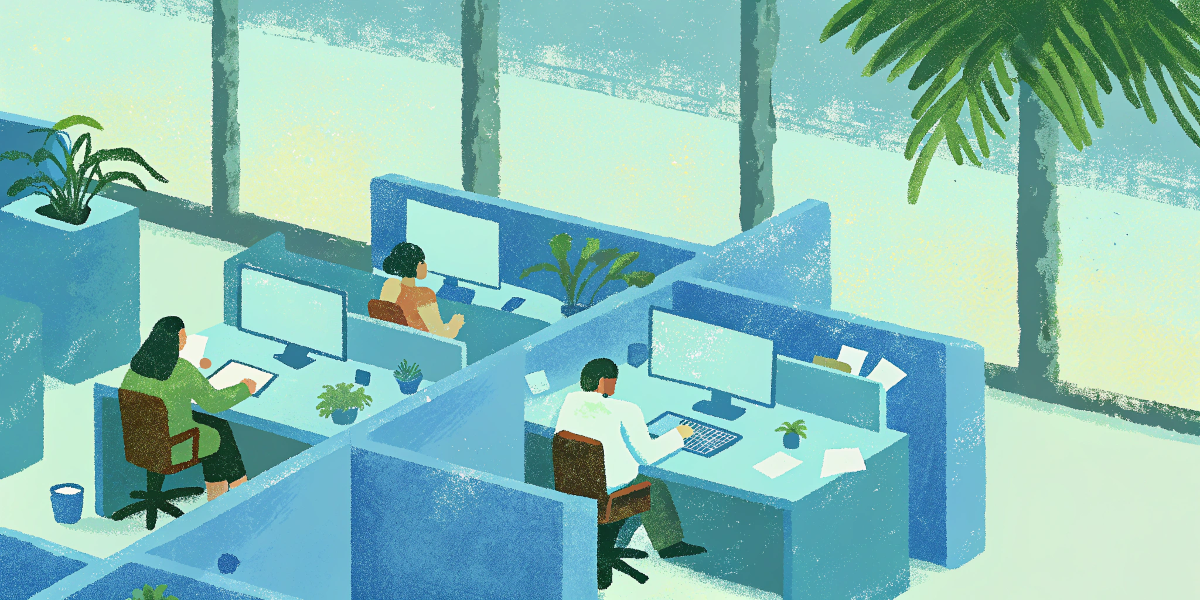
It’s not always obvious what kills your productivity or even goes beyond that to become a part of toxic productivity.
According to a CareerBuilder survey, about 75 percent of employers say that more than two hours of efficient work are lost every day.
It may get difficult to strike the balance between creating a collaborative environment and respecting the need for focus. Sometimes, the balance is disrupted so much that it leads employees toward toxic productivity. Let’s dig more into the matter and how we can boost productivity at work.
What is toxic productivity?

Toxic productivity is starting your workday excessively at the expense of other aspects of your personal life. It’s a mindset that shows up as a continual drive to “do.”
You could feel unable to relax, take any breaks, or appreciate all that you do when you’re so compelled to think about what else you “should” be doing.
As more people have begun working remotely, the lines between work and personal life have blurred, and many remote workers feel compelled to “prove” their worth. This can make it even more challenging to set the task aside and pay attention to yourself.
6 Productive things to do
Generally speaking, you may use some basic tactics to boost productivity at work, such as taking short breaks, making useful to-do lists, and avoiding social media.
This blog focuses on providing tips while avoiding any type of toxic productivity along the way. By finding the right mindset and genuine productive things to do, you can do more in less time.
There is no one-size-fits-all trick to increase productivity. However, you can try different tactics to see which one helps you the most and use it regularly.
Here are the top six of our favorite tips and comparisons on how to boost productivity at work without incorporating toxic productivity.
Tip # 1: Cubicle vs noisy colleagues
Research gives us controversial information on this subject. They say that chatty colleagues are the biggest distraction, and that sitting in a cubicle is distractive, too. Of course, that’s very useful information, but how can an employee benefit from that? Let’s look at the facts.
On the one hand, a survey held by Ask.com found that 61% of U.S. employees agree that noisy co-workers are the biggest office distraction and productivity killer. Many employers use open space to integrate their workers into ongoing projects. But the reality is that when you are working in a big open space, there will always be someone who laughs loudly, constantly interrupts you, or walks around. For that reason, 86% of employees would prefer to work alone to boost productivity.
On the other hand, one third of office workers believe they will have more productive things to do in an “open room”, as opposed to a cubicle environment. Many people say that it is hard to be efficient and creative in that type of setting. Cubicles are great for maximizing office space, but working in a cube is not exciting or inspiring.
Solution: There are always limits to working space, but employers can help their workers become more flexible. You should at least try to create a “silence room” or a “silence corner” where people don’t talk at all, but just work in silence. If it’s impossible or if this idea fails, there are always noise-cancelling headphones.
Tip # 2: Social networking sites vs limited Internet access
Access to social networking sites at work. To be or not to be? Such a complicated issue… Let’s see what the statistics can tell us. Alert! Many facts and figures!
First of all, 54% of American workers who use the Internet say it is very important for doing their job. Furthermore, 92% of working adults say the Internet has not hurt their productivity at work. Imagine that less than one out of every ten working adults says the Internet has made them less productive in the workplace! But that’s what employees think. It’s time to give the floor to employers.

46% of online-working adults, in their turn, say their employer limits their Internet access so they have more productive things to do. Cruel, isn’t it?
At first, take a look at the final fact. 21 percent of employees said they spend one hour or even more surfing the net for non-work-related information. So, it can turn into two or three hours of the work day…
Solution: Unfortunately, even if your productivity is higher with access to the Internet, the decision to block the Net can be made without your knowledge.
If you can, conduct a couple of experiments. Work for a week with an Internet connection and then without. If you are honest with yourself, you’ll find which way works best for you.
If you understand that the internet kills your productivity, try to use distraction-free applications for your browser that will only allow you to visit sites you need to work with.
Tip # 3: Breaks vs solid workflow
A coffee break, after a smoke break, after a snack break and then a long self-accusation of unproductivity sin. Endless breaks creep into work hours and steal time from your productive things to do without you even realizing it. You might recognize your colleagues, or yourself. If not, you may turn out to be the next type of unproductive worker.
The next type is a workaholic, taking no breaks, even for lunch, leading to poor performance at the end of the day. Remember toxic productivity?
You may look like an exhausted ghost who doesn’t want to take a rest. And your productivity … is close to zero. So, how do you choose a workflow that is both productive and beneficial to your health?
Solution: If you are an employee, instead of taking a break every time your brain begins to wander, choose to schedule snack or coffee breaks intermittently throughout the day. Doing so will help you focus during your workday and boost your work performance.
If you are an employer or a team leader, encourage your team to take breaks to recharge themselves every now and then to avoid running into toxic productivity. But take a clear stand against too frequent breaks that only have a purpose of wasting time.
Tip # 4: Multitasking vs monotasking
Let’s begin with the statement that we usually confuse the term “multitasking” with actually “switch-tasking.” In fact, we don’t perform two or more tasks at the same time because it is not physically possible; we just quickly switch between them. Very often this leads to so-called “toxic productivity“.
If you are adept at multitasking, your work schedule looks like a large book of magic inscriptions. Every minute, every second is scheduled. You feel like a captain among the raging waters of tasks. And one day you will find yourself sinking in this ocean of toxic productivity.

Why is that so? When you switch from the first task to another task, your focus doesn’t immediately follow. Simulation of work replaces productivity and real results. Even if you finish the first task before another, your focus becomes divided for a long time.
Every time you start a new task, you need about 25 minutes to fully concentrate again. Calculate how much time you lose having 2 tasks per day. Five tasks? Ten tasks?
If you prefer monotasking, you devote days, weeks and months to the Big Challenge. And when you complete it, you understand that small, but equally important tasks remain undone. Therefore, you feel like an imposter cause you fail at productive things to do.
Solution: Sounds unproductive, but try to let your brain rest in between the tasks – and if it is possible, try not to jump from one thing to another too often. For example, when you are not at the office, make an effort not to look at your phone and get comfortable with silence. It will help you to build the habit to turn it off– and stay concentrated at this very moment. This is where productivity begins.
Tip # 5: Meetings vs declining them
Do you know the feeling of taking part in meetings, where abstract concepts are discussed, where a small amount of information is received, where the goal of meeting is unclear? Sure, you know. Let’s be honest: this type of meetings is a complete waste of time.
Why do these unproductive meetings appear from time to time? Because not everyone understands the actual cost of an usual meeting.
Let’s listen to Jason Fried and Davin Heinemeier, the authors of the wonderful book called “ReWork:” “Let’s say you’re going to schedule a meeting that lasts one hour, and you invite ten people to attend. That’s actually a ten-hour meeting, not a one-hour meeting. You’re trading ten hours of productivity for a one hour of meeting time.” Impressive?
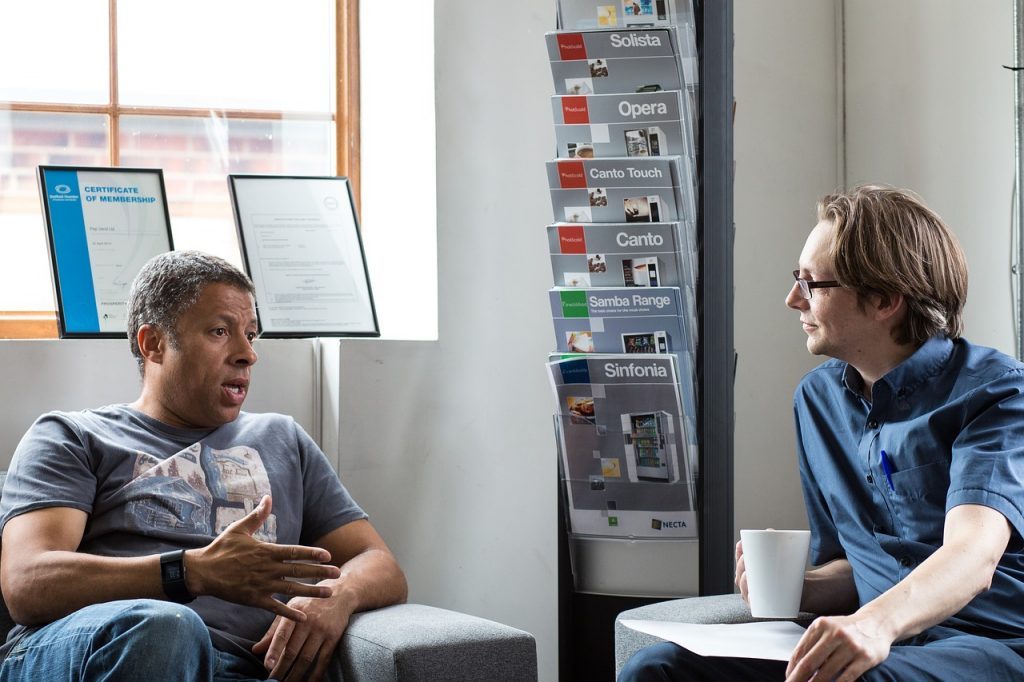
On the other hand, meetings are the method of creating a collaborative environment. It is unlikely you will be able to give them up. What should you do to boost productivity on your meetings?
Solution: Let’s acknowledge the fact that meetings are important for a work process. I just want to offer you several tips on how to not meetings kill your productivity:
- Meet only when there is a clear agenda,
- Set a timer. End the meeting when the time is up,
- Invite as few people as possible,
- Invite only the relevant players
- End with a clear result and make someone responsible for implementing it
You can also invest in a collaboration tool that will allow you to create plans, discuss ideas, and assign work all from a single “command center” that integrates with other applications you might be using, allowing you to focus on more productive things to do. And forget about counterproductive meetings for every little update from each team member. Read more about this issue in the next section.
Tip # 6: Social media vs team chats
Researchers found that people get frustrated if they are away from their cell phones for too long, so it’s no wonder that surfing social media tops many charts of time killers.
Remember the situation when you are going to post or tweet some promotional staff and 30 minutes later you suddenly find yourself scrolling your news feed. Apps such as Facebook, Instagram and Twitter are experts in killing productivity and provide hours of time-wasting content.
Сontrariwise, you won’t deny that the key to working more efficiently is to get systems of talking to each other. According to a recent survey conducted by research firm Ipsos, nearly 50% of employees believe social tools make them more productive while 30% of companies restrict usage or undervalue social tools.
In addition, almost half (46%) of US workers said they prefer to communicate with colleagues through email, IM or phone to avoid face-to-face interactions. Just think of it! People don’t want to connect with coworkers offline because it kills productivity.
Surprisingly, but employers tend to know about unproductivity that happens as a result of face-to-face communication. And 31% of them said they are willing to spend their own money to buy business communication tools. But what kind of social software will improve business communication productivity?
Solution: Shortly, the ideal choice is a team messenger. The market of team chats is diverse. Here every team can find an appropriate option depending on its needs. Team chat is an environment where you can create your own unique and productive work process. It will be the universe of your team where you and the members of your team won’t be distracted by your relatives or friends. Sounds great, doesn’t it? You should try something like that.
A bonus tip: boost productivity at work by standing desks
There is one more point I would like to add about ways to improve your performance at work. A new study from the Texas A&M Health Science Center School of Public Health found that workers with stand-capable workstations were about 46 percent more productive than those with traditional, seated desk configurations over the course of six months. Sounds impressive, doesn’t it?
One interesting fact of the study results is that the productivity differences between the stand-capable and seated groups were not as large during the first month. Starting with the second month, there were larger increases in productivity with the stand-capable groups as they got used to their standing desks.
Needless to say, that clean and organized desk helps set productivity levels at work.
So, what productive things actually boost performance?
Today, productivity is not about pushing yourself to the limit or skipping breaks. It is about being intentional and focusing on what really matters. It means doing more of the right things and avoiding burnout.
In this article, we shared six practical tips to improve productivity without falling into toxic overworking. From reconsidering your workspace and internet use to balancing meetings and breaks, these ideas show that sustainable productivity depends on awareness and smart habits.
Productivity is rarely just an individual issue. Often, it reflects the company culture. When leaders pay attention to early signs of problems and adjust the environment in time, employees are more likely to succeed. That is why these tips are useful not only for employees but also for managers who want to understand what affects their team’s performance.
If you want to boost productivity in your workplace, start by creating space for focus, clarity, and well-being. When people feel supported and empowered, productivity naturally follows.
Productivity
Work From Home Statistics: 10 Facts That Will Surprise You
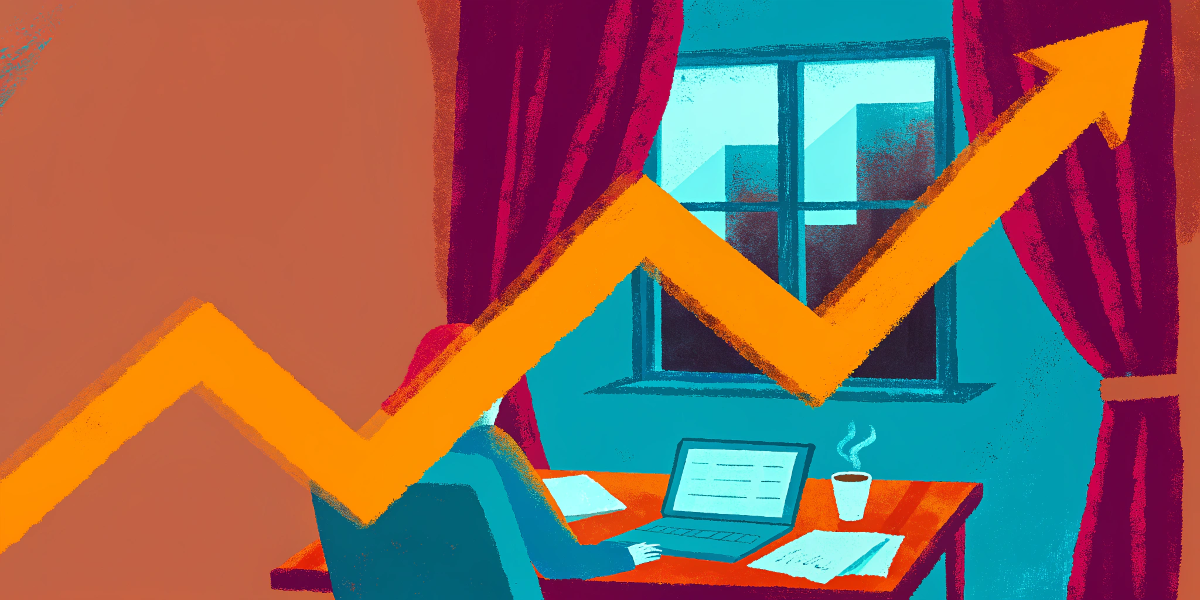
For many companies, working from home is still a novel idea, therefore data on remote work is limited. However, these ten work from home statistics appear to indicate that allowing employees to work from home, or working from home yourself, has tremendous value:
1. Employees are more productive when they work from home
To make a profit, businesses require productive professionals. Employees, on the other hand, are only productive around 77% of the time, according to research, and are more likely to be productive when working from home.
Majority of the employees polled in favour of being more productive when working from home. This is because of the lack of noise and interruptions that come with working in a crowded workplace, the removal of daily commutes, and the improved comfort of self-described introverts.
Coworkers, ringing phones, loud discussions, and individuals moving around in the workplace are all common sources of distraction for employees. It takes an employee an average of 23 minutes to refocus after being distracted. Most of these distractions are not even an issue when working from home. Introverts claim that they can get more work done when they’re at home, away from the pressures of having to interact socially with coworkers.
Others attribute their greater productivity to the fact that they are no longer wasting hours each day driving to and from work. Because they don’t have to commute, they’re more at ease and less resentful of working longer hours from home to complete a job. They also can use time management apps that will help them to stay productive while working from home.
2. Employees who work from home are 52% less likely to take time off
According to a CoSo Cloud survey, employees are encouraged to work more efficiently at home and take fewer vacations. Employees who work from home are more likely to work without calling in sick and also take fewer vacations resulting in lower absenteeism.
3. Managers of remote employees are concerned about reduced productivity, according to 82 % of them
Even though workplace productivity data by Owl Labs have repeatedly demonstrated that remote work increases productivity, managers who work with remote employees are nonetheless concerned about decreasing productivity and focus, as well as whether remote employees complete projects on time. They appear to be less concerned with employee loneliness and employee future.
Pulse surveys are a great way to take your work from home experience up another notch. Pulse survey benefits include greater flexibility, reduced commute times, and increased productivity since you’re able to focus on what matters most – company tasks.
4. Attrition is reduced by 50% when employees work remotely
Because employees are more satisfied at work when they work remotely, there is a significant reduction in employee attrition. When individuals leave a job, it’s usually because they’re dissatisfied with it.
Working from home, according to Stanford Business, is considered as a huge perk that could compensate for any other shortcomings in the position. Employees who stay on the job receive more experience and lower the need to train new employees, enhancing the overall performance of the team.
5. Working from home jobs have grown 115 % in the last decade
According to the State of Telecommuting, work from home jobs have grown 10 times faster than traditional jobs. This measure can be interpreted in a variety of ways. It’s possible that firms are understanding how much more productive individuals are when they work from home, and as a response, they’re expanding their workforce to include more remote working positions. It’s also possible that more people are keen to build their own work-from-home opportunities.
6. People who work from home on a regular basis are more satisfied
Employees who work from home at least once a month are 24 times more likely to be pleased at work, according to OWL Labs. There are a variety of reasons why someone can be happier working from home, but the most important is that happiness rises consistently.
7. Companies with remote positions have a 25% lower turnover rate
According to Owl Labs’ 2017 state of remote work report, positions that allow for working from home had a 25% lower turnover rate. This is most likely related to the job’s pleasure and stress levels; if employees are grateful for the ability to work from home, they are much less likely to quit.
8. Organizations with a completely remote workforce hire 33% quicker
The same report by Owl Labs states that if your entire team works remotely, you’ll be able to fill positions 33% quicker than your competition. This has an impact on your team’s overall output because you’ll be stuck with open positions for much shorter periods of time, and you’ll spend significantly more time at peak teamwork and production as a result.
Building a totally remote team, on the other hand, is difficult, especially if team members are in different parts of the world. It’s critical to create a culture where everyone feels valued as a team member.
9. At least some work is now done from home by 23% of employees
According to the Bureau of Labor Statistics, 23% of American workers currently work from home often. The number of people working from home is steadily increasing, indicating that companies are more confident in their employees’ ability to be productive under these circumstances.
10. 74% of experts believe that remote work will become the norm soon
When asked about the future of work, 74% of professionals predict that remote work will become the accepted norm. According to Forbes, this viewpoint is held by 76% of entrepreneurs, indicating that traditional office spaces, as well as co-working spaces, will soon decline to be in use.
Large firms such as Twitter and Slack have already stated that all employees would be able to work from home on a permanent basis, while Salesforce has just unveiled their hybrid work plan. Because of the precedent these companies are setting, as well as employee expectations, not having a remote work option will be damaging to a company’s ability to move forward.
Other advantages of working at home
According to these working from home statistics, productivity gains, effectiveness, and improved work performance are the evident benefits of working from home, but they aren’t the only ones a business may experience by implementing a work from home policy. The following are only a few of the other benefits:
1. Reduced office expenses
If you own your company and now rent an office, you should calculate how much money you’d save if you went completely remote. Allowing all your workers to work from home at the same time is a risky decision, but if it’s feasible for your company, you could save thousands of dollars per month.
2. Better job opportunities
If you’re recruiting remote employees, you won’t be limited to those in your immediate neighborhood; you’ll be able to hire people from all over the country, and even continents. This broadens your range of possibilities and allows you to locate better matches for open opportunities.
3. Benefits to the environment
People who work from home will not drive or even take public transportation to work. As a result, your team’s greenhouse gas emissions will be greatly reduced, which will have a positive impact on the environment.
Challenges of working from home
Despite its many upsides, remote work isn’t without its drawbacks. For remote setups to be sustainable, it’s essential to address the common challenges employees and organizations may face:
- Isolation and Loneliness
Many remote employees report feeling disconnected from their team. Without the daily interaction that comes with office life, it’s easy to feel left out or disengaged. This can affect mental health, collaboration, and overall job satisfaction — especially for extroverted team members. - Communication Barriers
Remote work depends heavily on digital communication tools, which can sometimes lead to misunderstandings, delayed responses, or misaligned expectations. Without face-to-face contact, building rapport or reading tone and intent becomes more difficult. - Work-Life Boundary Blurring
One major downside of working from home is that it can be difficult to “switch off.” When your home becomes your office, boundaries can dissolve. This often leads to burnout or overwork, especially for employees who feel pressured to be “always available.” - Performance Monitoring and Trust Issues
Some managers struggle with trusting employees they can’t see. As mentioned earlier, 82% of managers are concerned about productivity levels. This can lead to micromanagement or the adoption of invasive monitoring tools, which can erode morale and trust.
Last thoughts
People seek flexible schedules and the option to work from home or in a hybrid work style, even if only on an occasional basis. Furthermore, by implementing a few relatively simple regulations, businesses might save money while increasing productivity and employee morale.
Depending on your arrangement, working from home can be a more efficient work environment than a traditional office cubicle, also allowing you to achieve a better work-life balance. The epidemic has altered the way we work, with more businesses opting for at-home solutions.
Make sure that your staff is comfortable, organized, and healthy to ensure that their production remains at a high and consistent level for months to come.
Productivity
15 Surprising Employee Productivity Statistics That Will Impress You

Employee productivity, according to WhatIs.com, is “an evaluation of an employee’s or group of employees’ efficiencies.”
Employee productivity, in short, assesses how much useful work an employee performs for an organization over a given time. If a company wants to prosper, it needs people that are highly productive.
We’ll give you 15 intriguing and useful employee productivity stats that are applicable today. Hopefully, you can use this information to develop new policies in your company and improve the general efficiency of your team.
Employees prefer to work alone 86% of the time
According to a study done by Apollo Technical, whether working from home or at the office, on average 86% prefer to work alone. Employees report that being able to separate oneself from others reduces distractions. They also feel less motivated to deliver or connect in certain ways, allowing them to concentrate only on their tasks.
This autonomy pertains to projects as well. Many workers would rather work on projects on their own than rely on others to complete their part of a collaborative effort. This is still applicable in most circumstances, even if working alone requires the person to work harder.
Employees believe that interactivity may boost workplace productivity by 89%
When projects are gamified and become interactive, many employees believe they become more competitive and motivated to do them, which enhances workplace productivity. Statistics on productivity and technology continue to reveal a link between technical complexity and output.
80% of employees require financial assistance
According to a poll of 220 clerks, over 175 of them wished their employers had provided financial assistance to them. Employees who are concerned about their financial situation are less productive than those who are financially comfortable. Employees seek loan counseling, and it’s a relatively inexpensive practice to start in most organizations. They believe that if they were more confident in their financial management, they would be happier and more productive in general.
Every three minutes, the average employee is interrupted
After an interruption, it may take people 23 minutes to refocus. Employees are interrupted every three minutes and five seconds, according to a study done by experts at the University of California, Irvine. That indicates that for every 26 minutes spent at the office, workers get three minutes of work done.
The average employee works for less than three hours daily
Every day, the average worker is only productive for 60% or less across all industries. However, for some working professionals, this ratio reduces dramatically. According to VoucherCloud research, the average employee is only productive for merely two hours and 23 minutes each day.
This means employees are generally unproductive for five hours and 37 minutes per day, assuming an eight-hour workday. Every day, that’s a significant amount of time and money squandered by the employer.
Employees cost $28 billion a year to using facebook
Facebook also costs employers several billion dollars per year, according to research done by Hubspot. This is because employees spend roughly 32% of their workdays on Facebook. Generally, they won’t be working if they are on social media. Each year, this productivity loss results in a significant amount of money being squandered.
Multitasking has been shown to reduce productivity by 40%
Multitasking, according to productivity data, can reduce your productivity rather than increase it. Constantly switching from one job to another is stressful to the brain, making us less productive or causing toxic productivity.
Try incorporating the 1-3-5 rule into your work routine instead of handling multiple projects at once. This method works by handling the most difficult things first, then moving on to medium-level jobs, and finally finishing the day with the simplest tasks.
Employees involved in decision making are more productive
Employees who are allowed to engage in “major decision-making sessions” are often more efficient, according to another study. When employees are given a say in company decisions, they feel as if their position in the firm counts – as if they have a perspective that is heard. Higher productivity rates are a result of these feelings.
People often feel like they helped develop something when they’re investing in it and have a hand in improving it. They want it to succeed, therefore they put in extra effort to make it happen.
Stress has a negative impact on productivity
According to research by Go Remotely 50% of employees miss one to five hours of work every week due to stress. Managers usually take several actions to reduce the stress levels which ultimately affect the productivity of employees. These measures may include offering a higher salary, paid vacation leaves, more flexibility in work schedules, and wellness initiatives for better productivity levels.
Appropriate nutrition can boost work productivity by 25%
A productivity study by Go Remotely that lasted three years questioned 20,000 employees per year. They came to the conclusion that employees who ate fruit and vegetables at least four days a week were 25% more productive than those who did not.
Employees are more productive around the holidays
According to workplace productivity statistics, the main causes for the productivity decrease among the 35% who feel less productive are social and personal responsibilities, increased year-end workload, flu season, and holiday shopping. The more productive employees, on the other hand, avoid common office distractions to depart on time.
Stress and a lack of work-life balance
According to the Yerkes-Dodson Law, our ability to perform at our best is determined by the amount of pressure we are under for the work we are performing. When we are under too much stress, our performance suffers dramatically. Productivity suffers when an employee’s mental and physical resources are depleted.
66% of 1,077 adults surveyed by Glassdoor believe they would be better and more productive employees if they had more sleep, especially those between the ages of 18 and 44. Furthermore, persistent stress is linked to absenteeism. According to research by the Health Advocate, one million employees miss work every day owing to stress.
Freelancers are productive 36 hours each week
According to a study done by Yahoo Finance, in comparison to the average office worker, the average freelancer works for roughly 36 hours each week. If freelancers work five-day weeks like the rest of us, that equates to almost seven hours of productivity per day.
They put forth more effort than those in other professions since the amount of time they spend working is directly proportional to the amount of money they earn. But the overall productivity of a freelancer also depends on the type of technology, software tools, and techniques they are using.
Moreover, it is also noticed that companies who need to leverage on-demand workforce onboarding benefit from a freelance management system. It makes onboarding and offboarding, invoicing, payment, and workforce classification easy and also help managers help find the right talent quickly.
Environment influences productivity
According to a Robert Half poll, 71% believe that listening to music at work makes them more productive. According to a CareerBuilder poll, 53% are less productive when their workplace is excessively cold. According to Gallup’s State of the Local Workplace, 85% of employees are neither engaged nor actively disengaged at work, resulting in $7 trillion in lost productivity. According to research by Exeter University, open workplace layouts cause a 32% decline in overall happiness and a 15% drop in productivity.
Meetings are exceptionally unproductive
Meetings aren’t necessarily a waste of time, but they aren’t always helpful either. Atlassian did a study on meetings that revealed the following startling findings:
- 91 % daydream in meetings
- 39 % have slept in meetings
- 96 % have missed at least one “mandatory” meeting
- 73 % started working on other tasks while attending a meeting
- 50 % of employees perceive meetings to be a waste of time
AI programs enhance productivity up to 40%
In 2025, AI programs like ChatGPT, Grammarly, Jasper, and Notion AI are the norm at the workplace. They assist in writing, coding, note-taking, calendaring, and research — making employees free up to 10 hours a week.
This increase in efficiency is supported by an MIT-Stanford joint report, which found that employees using AI finished work 25% faster and with better quality. AI is thus widely preferred today by writers, marketers, developers, and customer support.
Each team utilizes these tools differently. Writers have AI to write and rewrite faster. Developers utilize it to code and debug. In customer service, AI speeds up responses and handles repeat inquiries.
Aside from helping at work, AI also reduces decision fatigue. By taking over routine tasks, it clears room in workers’ brains for more complex and creative work.
Looking ahead, AI will be integrated into most workplace platforms. Those who can harness these tools effectively will have the upper hand as AI becomes the norm in workflows on a daily basis.
That said, AI is a tool — not a replacement. Human creativity, judgment, and empathy remain essential for true success. AI boosts productivity, but it can’t replace the value people bring to the workplace.
The takeaway
Given the numerous advantages of workplace productivity, it’s no surprise that businesses are always looking for new ways to boost productivity and developing unique productivity metrics to effectively evaluate it.
It is difficult for any organization to maintain a specific level of productivity, especially considering the numerous factors that can influence it. Even so, anyone who wants to give it a shot will be handsomely rewarded.
-
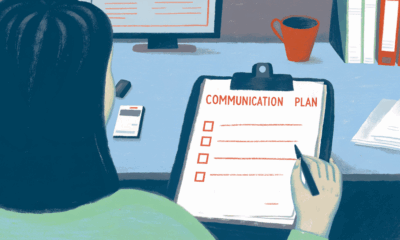
 Communication3 months ago
Communication3 months ago6 Communication Plan Templates With Examples
-
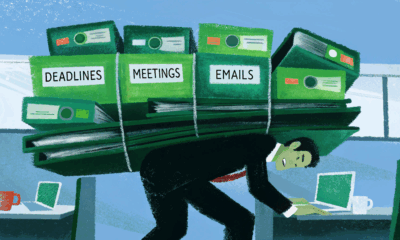
 Collaboration3 months ago
Collaboration3 months ago6 Tips for Lifting the Burden of Too Many Responsibilities
-

 Collaboration2 months ago
Collaboration2 months ago30 Work From Home Memes: Funny Work Memes to Make You Laugh
-

 Collaboration3 months ago
Collaboration3 months ago35+ Collaboration Quotes to Celebrate Teamwork
-
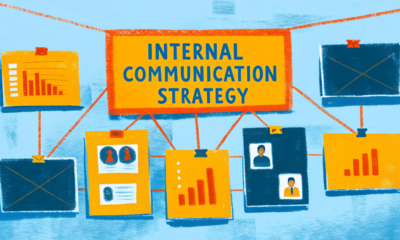
 Collaboration3 months ago
Collaboration3 months agoThe Definitive Guide to Creating an Internal Communication Strategy
-

 Productivity2 months ago
Productivity2 months agoSuper True Mental Health Memes You’ll Probably Relate To
-

 Collaboration3 months ago
Collaboration3 months ago7 Easy Strategies for Effective Team Communication
-

 Productivity3 months ago
Productivity3 months agoWhat is Imposter Syndrome and How to Overcome It?








